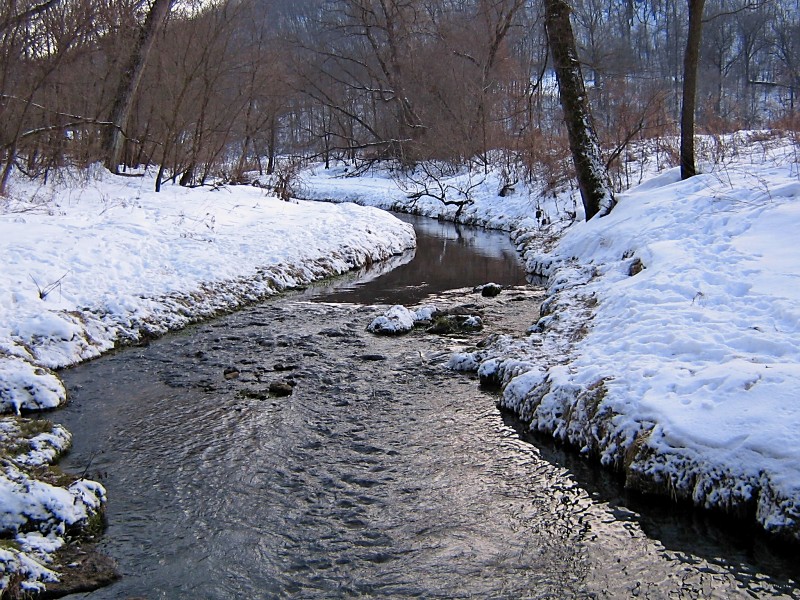By Jane Mazack
Exploring Daley Creek is a blog series that investigates the biological and physical processes at work in a small stream in Minnesota and what it means to consider rivers in a scientific framework. Follow along to learn more about life in the stream and its broader connections, both in the present and as we consider a future of climate change.
It’s winter in Minnesota — and that means cold, snow, and ice. But if you visit Daley Creek in southeastern Minnesota, you’ll see that despite the cold weather, the water in the stream is not frozen. Do you know why?
Daley Creek, Houston County, Minnesota. Photo by the author, all rights reserved.
Last week, I talked about how Daley Creek has twisted and turned its way through a deeply carved valley. That erosion has brought the stream down through multiple geologic strata. Each of these layers was laid down at a different time in history, and so they have different compositions.
The strata that Daley Creek flows through are made of sandstone and limestone. These rock formations contain groundwater in their pores and fractures; this water originates from surface water percolating down into the ground, but it remains underground for a relatively long period of time. Over time, groundwater equilibrates to the mean annual air temperature — around 9°C (48°F) in this area.
When groundwater enters a stream in the winter, it warms the water, preventing it from freezing. The effect is opposite in the summer – groundwater cools the stream’s temperature. In both cases, the temperature of the groundwater is less extreme than the temperature of surface water. As a result, Daley Creek has a narrower temperature range than surface-water fed streams.
Groundwater-fed streams, which remain ice-free in winter and cool in summer, provide ideal habitat for trout and winter-adapted insects… stay tuned!
The writing and analysis of this blog series were conducted under the auspices of the John E. Sawyer Seminar “Making the Mississippi: Formulating New Water Narratives for the 21st Century”. Sawyer seminars are funded by the Andrew Mellon Foundation; further information about “Making the Mississippi” can be found here.
